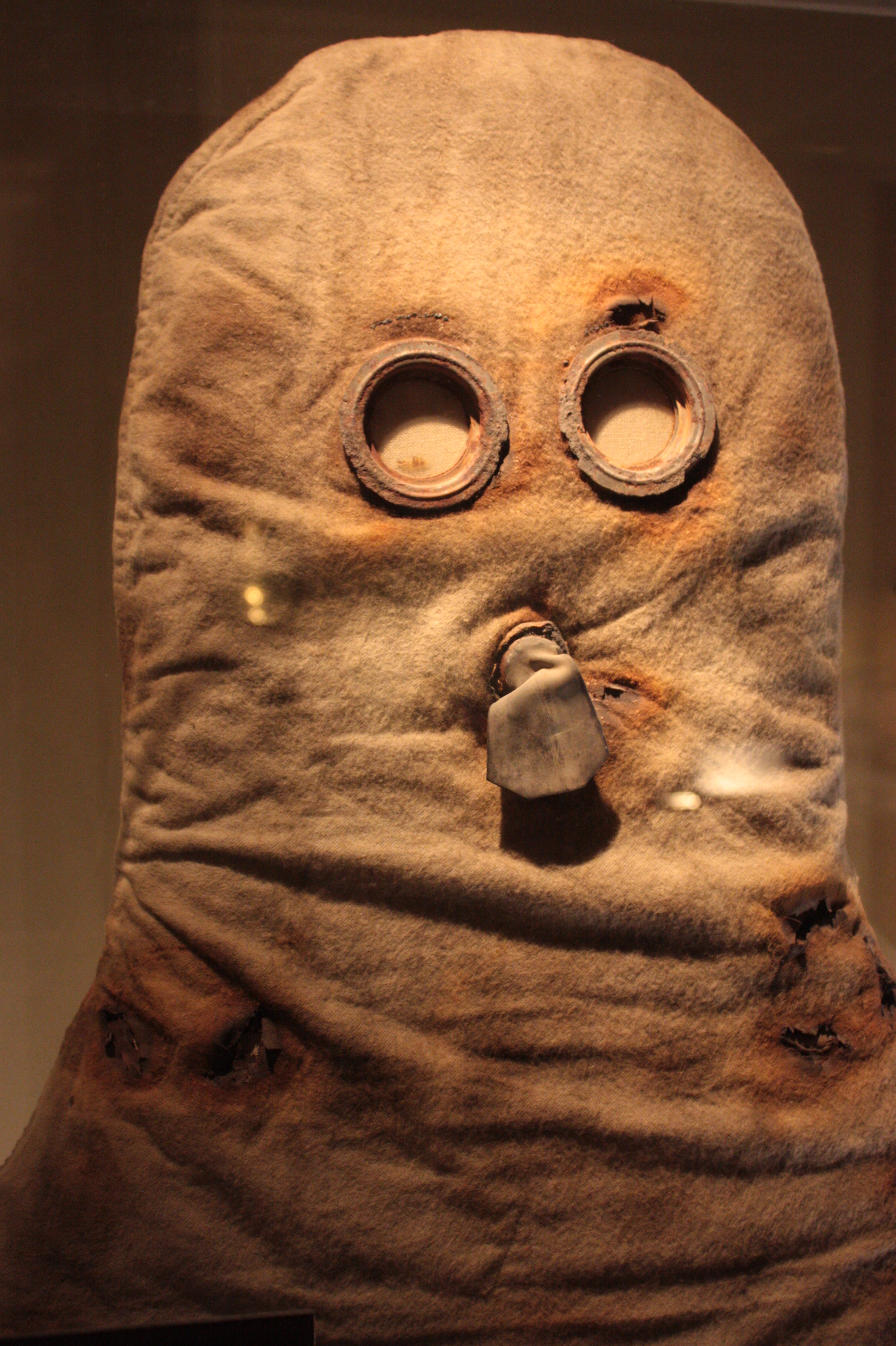PH helmet on:
[Wikipedia]
[Google]
[Amazon]
 The P helmet, PH helmet and PHG helmet were early types of
The P helmet, PH helmet and PHG helmet were early types of
The gas mask database: The UK
World War I military equipment of the United Kingdom Gas masks of the United Kingdom {{UK-mil-stub
 The P helmet, PH helmet and PHG helmet were early types of
The P helmet, PH helmet and PHG helmet were early types of gas mask
A gas mask is a piece of personal protective equipment used to protect the wearer from inhaling airborne pollutants and toxic gases. The mask forms a sealed cover over the nose and mouth, but may also cover the eyes and other vulnerable soft ...
issued by the British Army
The British Army is the principal Army, land warfare force of the United Kingdom. the British Army comprises 73,847 regular full-time personnel, 4,127 Brigade of Gurkhas, Gurkhas, 25,742 Army Reserve (United Kingdom), volunteer reserve perso ...
in the First World War
World War I or the First World War (28 July 1914 – 11 November 1918), also known as the Great War, was a World war, global conflict between two coalitions: the Allies of World War I, Allies (or Entente) and the Central Powers. Fighting to ...
, to protect troops against chlorine
Chlorine is a chemical element; it has Symbol (chemistry), symbol Cl and atomic number 17. The second-lightest of the halogens, it appears between fluorine and bromine in the periodic table and its properties are mostly intermediate between ...
, phosgene
Phosgene is an organic chemical compound with the formula . It is a toxic, colorless gas; in low concentrations, its musty odor resembles that of freshly cut hay or grass. It can be thought of chemically as the double acyl chloride analog of ...
and tear gas
Tear gas, also known as a lachrymatory agent or lachrymator (), sometimes colloquially known as "mace" after the Mace (spray), early commercial self-defense spray, is a chemical weapon that stimulates the nerves of the lacrimal gland in the ey ...
es. Rather than having a separate filter for removing the toxic chemicals, they consisted of a gas-permeable hood worn over the head which was treated with chemicals.
The P (or Phenate) Helmet, officially called the Tube Helmet,
appeared in July 1915, replacing the simpler Hypo Helmet
The Hypo helmet, or British Smoke Hood (its official name), was an early British World War I gas mask, designed by Cluny Macpherson.
Background
The German army used poison gas, in the form of chlorine, for the first time against Triple Entente ...
. It featured two mica
Micas ( ) are a group of silicate minerals whose outstanding physical characteristic is that individual mica crystals can easily be split into fragile elastic plates. This characteristic is described as ''perfect basal cleavage''. Mica is co ...
eyepieces instead of the single visor of its predecessor, and added an exhale valve fed from a metal tube which the wearer held in his mouth. The exhale valve was needed because a double layer of flannel – one treated and one not – was needed because the solution attacked the fabric.
It had flannel layers of cloth-dipped in sodium phenolate
Sodium phenoxide (sodium phenolate) is an organic compound with the formula NaOC6H5. It is a white crystalline solid. Its anion, phenoxide, also known as phenolate, is the conjugate base of phenol. It is used as a precursor to many other organic ...
and glycerin
Glycerol () is a simple triol compound. It is a colorless, odorless, sweet-tasting, viscous liquid. The glycerol backbone is found in lipids known as glycerides. It is also widely used as a sweetener in the food industry and as a humectant in pha ...
and protected against chlorine and phosgene, but not against tear gas. Around 9 million were made.
The PH Helmet (Phenate Hexamine) replaced it in January 1916, and added hexamethylene tetramine
Hexamethylenetetramine (HMTA), also known as 1,3,5,7-tetraazaadamantane, is a heterocycle, heterocyclic organic compound with diverse applications. It has the chemical formula (CH2)6N4 and is a white crystalline compound that is highly soluble in ...
, which greatly improved protection against phosgene and added protection against hydrocyanic acid
Hydrogen cyanide (formerly known as prussic acid) is a chemical compound with the formula HCN and structural formula . It is a highly toxic and flammable liquid that boils slightly above room temperature, at . HCN is produced on an industrial s ...
. Around 14 million were made and it remained in service until the end of the war by which time it was relegated to second line use.
The PHG Helmet appeared in January 1916 and was similar to the PH Helmet but had a facepiece made of rubber sponge to add protection against tear gas. Around one and a half million were produced in 1916–1917.
It was finally superseded by the Small box respirator
The Small Box Respirator (SBR) was a British gas mask of the First World War and a successor to the Large Box Respirator. In late 1916, the respirator was introduced by the British with the aim to provide reliable protection against chlorine and ...
in 1916, which was much more satisfactory against high concentrations
of phosgene or lachrymators.
References
External links
The gas mask database: The UK
World War I military equipment of the United Kingdom Gas masks of the United Kingdom {{UK-mil-stub